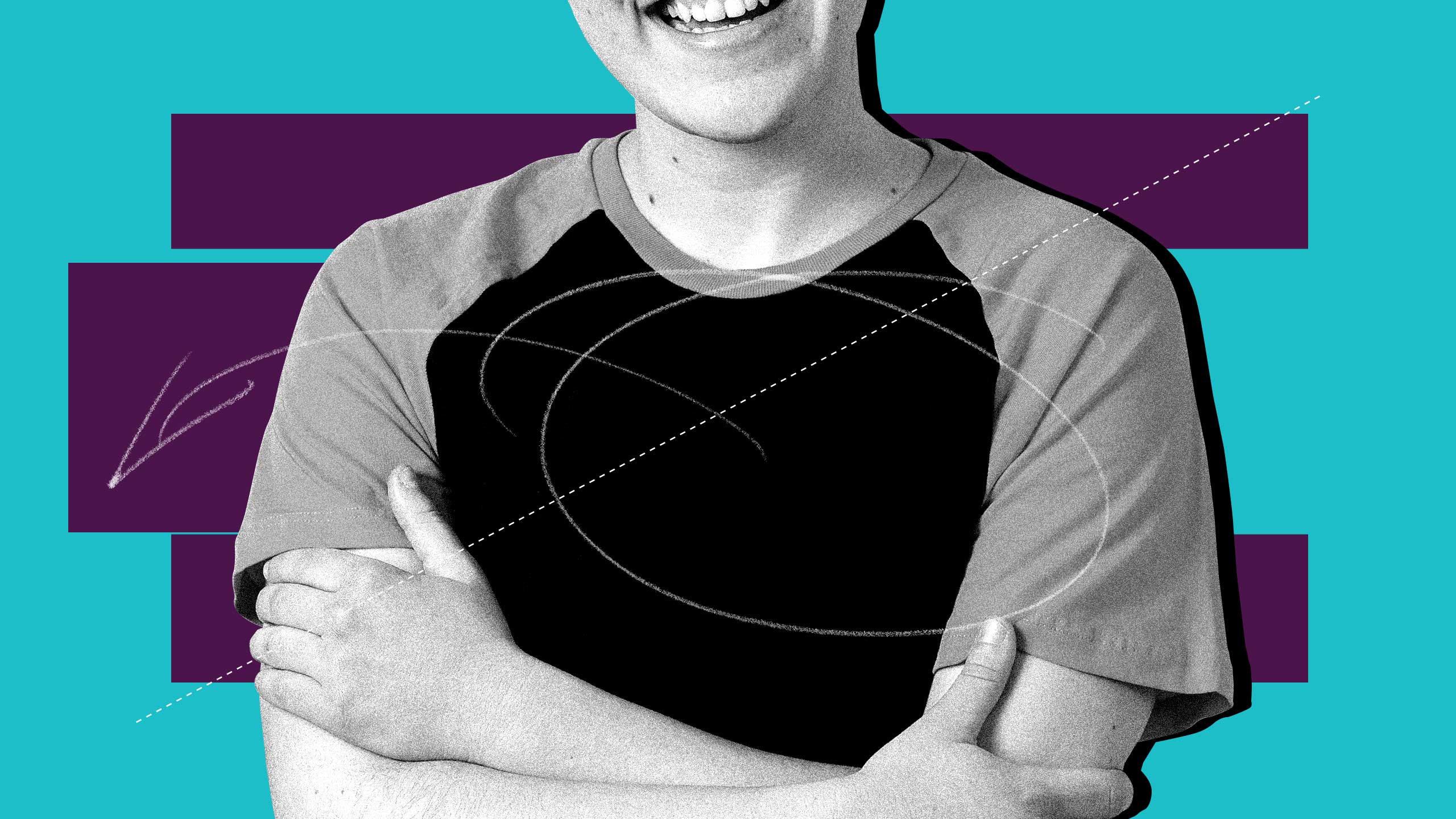Top surgery. Chest construction. The tit eviction. The ol’ nip-nop chip-chop. The teet yeet. Whatever you call it, it can be a life-changing and affirming procedure for trans folks of all stripes.
While it’s not necessarily important for everyone’s gender journey, the gender-affirming procedure colloquially known as “top surgery” is a big part of some trans folks’ medical transition. The COVID-19 pandemic gave many trans people the space to explore their identities and come out, and now they may be considering surgeries.
But a number of first-person accounts and guides for getting top surgery in English-speaking countries focus on the United States, which has a vastly different medical system from Canada. South of the border, the procedure can run up huge medical bills—well into the tens of thousands of dollars. And doctors like Florida’s Charles Garramone can garner thousands of online followers and celebrity-level name recognition amongst trans social media users.
But here in Canada, it’s (mostly) free if you need it. Gender-affirming top surgery is covered in most provinces under our public health care system. And while that’s great news for trans folks, it doesn’t mean the process is totally easy. Not every province and territory currently has surgeons who perform the procedure, and the exact process of getting referred and paying for it ranges from jurisdiction to jurisdiction. Some provinces like British Columbia have centralized trans health care networks, while it’s the wild west in others.
Here’s everything you need to know if you’re considering top surgery in Canada.
What is top surgery?
Top surgery is a procedure some trans and non-binary folks assigned female at birth choose to undergo in order to achieve a flatter and more traditionally “masculine” chest. It is technically different from a straight-up mastectomy, in that it usually involves some level contouring or intentional scar placement to create that “masculine” chest.
There are several techniques used to achieve this, and they vary based on patient preference and chest size. Smaller chested individuals may be able to have tissue removed without damaging or moving the nipple and areola, while larger chested folks usually require the nipple to be removed and reattached (or they may choose to go nipple-less).
A subcutaneous or periareolar mastectomy involves small incisions at the base of the nipples from which the tissue, fat and extra skin is removed. A double-incision mastectomy involves multiple incisions made on the chest in order for excess tissue and skin to be removed. The incisions are then closed together and the nipples can be reattached.
You can talk about which technique is best for you with your surgeon.
How do I get a referral for top surgery in Canada?
In most provinces, it starts with speaking with your family doctor or nurse practitioner. If you don’t have access to either, you can reach out to a local LGBTQ2S+ health group to discuss options for finding affirming medical professionals, or even to be directly connected to someone who can refer you. Rainbow Health Ontario or Three Bridges Community Health Centre can connect you to top surgery referrals in Toronto and Vancouver, respectively.
Gil Goletski, who lives in Metro Vancouver, didn’t have a family doctor when they started their top surgery process, so they went through Three Bridges. They say it was helpful to have all of their transition-related medical care filtered through the same place—and it be an affirming place at that.
“Originally when I wanted to start hormones and they set me up with a doctor, I went to a couple of appointments with her and she started me on that process, doing the referral for surgery,” Goletski says.
During your referral appointment, you can expect to be asked questions around your feelings about your body, gender identity, dysphoria and goals for surgery or other aspects of medical transition. You’ll also talk about whether you’re able to take time off of work for the surgery and what sort of support networks you have in your life—it’s important to have a close friend, partner or family member who can pick you up from the hospital and help you out with tasks like bathing in the weeks post-op.
You’ll also be asked about your health habits, particularly smoking. Some research has shown that smoking cigarettes can increase your risk of surgical complications, including nipple necrosis (the horror situation of your nipple falling off).
While the process varies from province to province, your assessor will usually provide a determination either for or against surgery after your referral appointment, and then you move on to a surgeon.
What requirements must I meet to get top surgery in Canada?
Barriers to accessing top surgery mostly come at the level of individual surgeons. You do not have to be on HRT (hormone replacement therapy) to get top surgery, though some surgeons recommend it in order to achieve a certain look. Similarly, weight or BMI (body mass index) should not technically prevent you from getting the surgery, but internalized fatphobia in the medical system can lead to certain surgeons rejecting you.
Many surgeons will perform top surgery on anyone, regardless of size, though they may warn you about some risks and possible complications.
Some surgeons also recommend chest-related strength-building in the months ahead of surgery in order to give some muscle definition to guide the incisions.
It’s important to remember that if a certain surgeon isn’t a fit for you, there is usually an option to see another. Goletski was initially matched with one Vancouver-area surgeon, who said they couldn’t do the procedure due to their history with marijuana smoking.
“My referral was rejected because I said that I smoked cannabis, and they rejected me outright not because I wouldn’t stop before surgery but just because I smoked cannabis at all,” they say.
However, when matched with another surgeon, Goletski was told that wouldn’t be an issue as they stopped around the surgery date.
“When I eventually got surgery, it wasn’t a problem,” they say. “I was just told to stop smoking when I was healing and to do edibles or vaping instead of smoking. And that was all fine.”
Goletski also recommends that folks not be afraid to switch surgeons if a particular waitlist seems to be taking a long time, particularly in a province like B.C. where everything is centralized through an authority like TransCare B.C. They were matched to a second surgeon and languished on their waitlist for months, before getting on a third waitlist and getting in right away.
Nico Mara-McKay got top surgery in Ontario during the pandemic, and they say that the variance between medical professions means that you should be prepared to advocate for yourself.
“Do your research beforehand to know what you want because they won’t tell you what you need,” they say. “Even if you think they might, do your research.”
They said they ended up in a situation where they had to essentially dictate their referral to their doctor because the practitioner wasn’t well-versed in trans issues. They also point out that even knowledgeable doctors may not be up-to-date on the latest requirements.
“I’m not on hormones, that’s not part of my journey,” they say. “But doctors might have that old information. Make sure that you know what the rules and regulations are, or whatever health care options you have within your specific sphere, because they do change.”
How much does top surgery in Canada cost?
Ostensibly, it’s free across Canada, just like other medically necessary surgeries. But there can be unexpected fees in certain regions.
Mara-McKay got top surgery from a popular Ontario surgeon earlier this year, but say they were hit with a “contouring fee” part way through the consultation process that caught them by surprise.
“For the removal of breast tissue, there’s no fee,” they say. “But if you want contouring to get rid of ‘dog tags’ that are on the side of the chest or, you know, shape the chest, then you have to pay for it. For me, it was about $3,000.”
It turns out that’s very common in Ontario. When reached by Xtra, Rainbow Health Ontario confirmed that, unlike in other provinces, the entire top surgery procedure is not covered by the provincial health plan; most Ontario surgeons will charge the contouring fee to the patient, in addition to the top surgery cost they bill to the province.
Provincial funding from the government of Ontario only covers the basic mastectomy. However, it is usually not an option for a patient to get “just the free part,” which means Ontario patients like Mara-MacKay end up footing some couple thousands of dollars worth of surprise bills. According to Rainbow Health Ontario, this “contouring” fee is a result of public health policy in the province, and a decision to only fund part of the procedure at the provincial level.
It’s good to ask your referrer or surgeon about any fees early in the process, so you can understand your options. For example, some Ontario patients actually choose to see surgeons elsewhere, such as in Montreal, in order to get publicly-funded surgery while avoiding the contouring fee.
You should also be prepared to budget for the time off of work, which will vary depending on your job, as well as for any bandages, pain medications or other healing process needs recommended by your surgeon.
Where can you get top surgery in Canada?
In most Canadian provinces, the procedure is covered, at least partially, by public health care, since it is a medically necessary procedure for some people to alleviate gender dysphoria. Most provinces also have surgeons who will do top surgeries, though their availability can vary.
The process of accessing the surgery can vary based on provincial public health policy, funding and the number of forms you need to fill out. Here’s where you can learn more about getting top surgery in each province and territory.
British Columbia: TransCare BC
Ontario: Rainbow Health Ontario
Quebec: GRS Montreal
Alberta: Alberta’s Gender Reaffirming Program
Saskatchewan: Saskatchewan Trans Health Coalition
Manitoba: Sexuality Education Resource Centre MB
Nova Scotia: Nova Scotia Health
New Brunswick: New Brunswick Health
Prince Edward Island: PEI Health
Newfoundland and Labrador: Trans Support NL
Yukon: TransCare BC
Northwest Territories and Nunavut: NWT Health


 Why you can trust Xtra
Why you can trust Xtra


